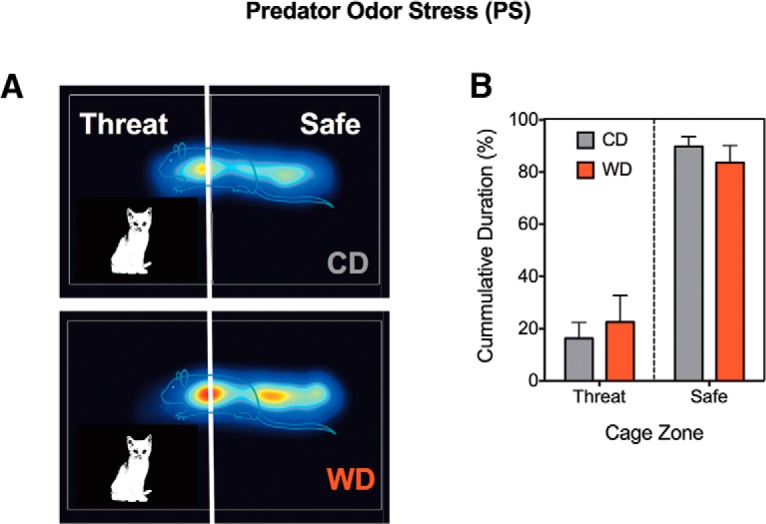Figure 2.

Exposure to PS evokes short-term avoidance behaviors. A, Heat maps depicting the time spent in the threat zone (area of the cage with cat urine odor) and safe zone during PS exposure at P88. B, Analyses showed marked differences in approach–avoidance behaviors. Rats exhibited a strong preference for the safe zone (F(1,32) = 78.87, p < 0.0001). The diet type did not alter this behavior (F(1,32) = 1.43 × 10−10, p = 1.00). No interactions were found between the time spent in the odor threat zone and diet type consumed (F(1,32) = 0.68, p = 0.42). All data are presented as the mean ± SEM; n = 8-10 rats/group.
